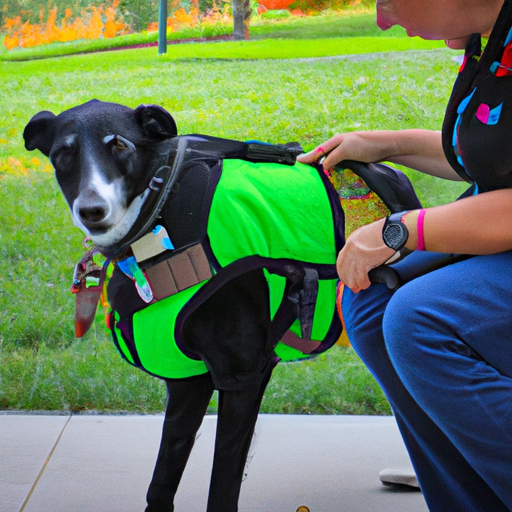Introduction
You may have seen them around – dogs wearing vests, guiding their human companions in public places. But do you know who these dogs are and what they do? They’re called service dogs, and their role is more than just being a pet. They perform tasks that their human companions (often with disabilities) can’t do on their own.
The Role of Service Dogs
Service dogs are trained to assist people in various ways. For example:
- Guide Dogs: These dogs help visually impaired individuals navigate their surroundings.
- Hearing Dogs: These dogs alert deaf or hard-of-hearing individuals to important sounds like alarms, doorbells, or crying babies.
- Mobility Assistance Dogs: These dogs help people with mobility issues by fetching objects, pushing buttons, or even helping with balance.
These are just a few examples. The roles of service dogs are as diverse as the needs of their human companions.
| Type of Service Dog | Role |
|---|---|
| Guide Dogs | Help visually impaired individuals navigate |
| Hearing Dogs | Alert deaf or hard-of-hearing individuals to sounds |
| Mobility Assistance Dogs | Assist people with mobility issues |
Training of Service Dogs
Training a service dog is a significant commitment. It involves teaching the dog specific tasks related to the handler’s disability, as well as general obedience and public access skills. The training can take anywhere from six months to two years, and it’s usually done by a professional trainer or a non-profit organization.
The Rights of Service Dogs and Their Handlers
In the U.S., service dogs are protected under the Americans with Disabilities Act (ADA). This means that service dogs are allowed in public places where other dogs might not be, such as restaurants or stores. It’s important for you, as a caregiver, to know these rights to ensure fair treatment for your loved one and their service dog.
Emotional Support Animals vs Service Dogs
It’s worth noting that service dogs are not the same as emotional support animals (ESAs). While ESAs provide comfort and support, they are not trained to perform specific tasks related to a disability. Therefore, they don’t have the same legal protections as service dogs.
Frequently Asked Questions
Q: Can any dog become a service dog?
A: While certain breeds are commonly used due to their temperament and trainability, any dog that can perform the necessary tasks can potentially be a service dog.
Q: Can service dogs ever play and relax?
A: Yes, when they’re not working, service dogs are just like any other dogs. They play, relax, and enjoy being a pet.
Q: How can I get a service dog?
A: There are various non-profit organizations that train and provide service dogs. It typically involves an application process and a waiting period.
Q: Do service dogs need to wear a vest or harness?
A: No, there is no legal requirement for service dogs to wear a vest or harness, although many handlers choose to do so for clarity.
Caring for someone with a disability can be challenging, but it’s also rewarding. And with the help of service dogs, the day-to-day tasks can become a bit easier. Understanding the role, training, and rights of service dogs can help you make the most of this extraordinary resource.



